The Challenges of Data in the Built Environment: A Reflection
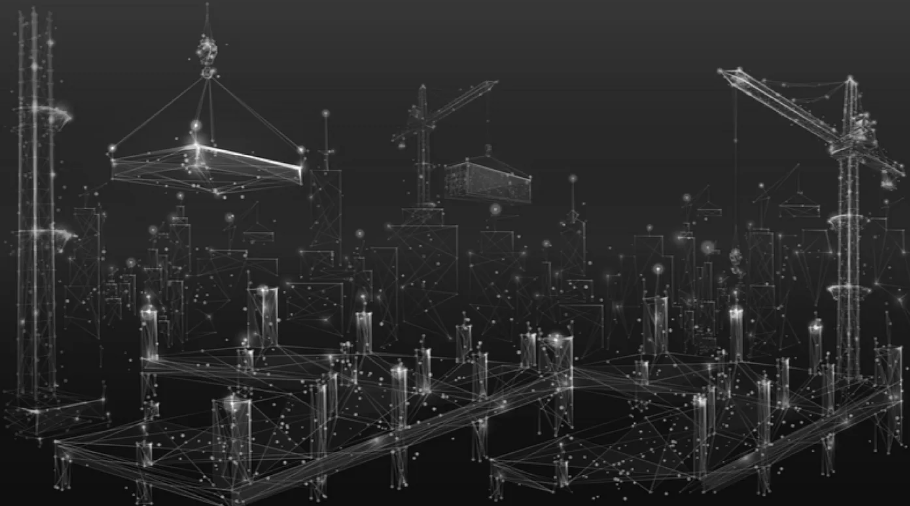
From initial planning through design specifications and BIM (Building Information Modeling) models to the control systems that run the built environment, data is constantly present.
Connecting the volume and variety of data, learning from it, and providing new services, advantages, and insights to users has always been a problem especially in the construction sector.
 In the face of climate change, the challenge is even bigger.
In the face of climate change, the challenge is even bigger.
Data as the key to climate neutrality
As we work to address the significant systemic changes in the built and natural environment necessitated by climate change, data is becoming more and more important.
Data will be the driving force behind the performance improvements we require, the design decisions we make, and the transparency in reporting that fosters support for the fundamental transformation that must be accomplished.
Data serves as the foundation for the solutions we are creating for clients in every industry, from energy and utility companies to home builders and transportation network operators.
Grasping the built environment through data analysis however presents a distinct and potentially momentous endeavour, influenced by cultural and technological limitations which we will shed the light on as well as present some solutions.
Data for Social Good
The purpose of the built surroundings is to cater to the needs of the community. Our objective should be nothing short of promoting the welfare, durability, fairness, and environmental friendliness, as outlined in the government’s Transforming Infrastructure Performance: Roadmap to 2030.
It is crucial to recognise that data cannot remain neutral or detached in this context. Instead, we must leverage its potential to aid the built environment in attaining this overarching objective.
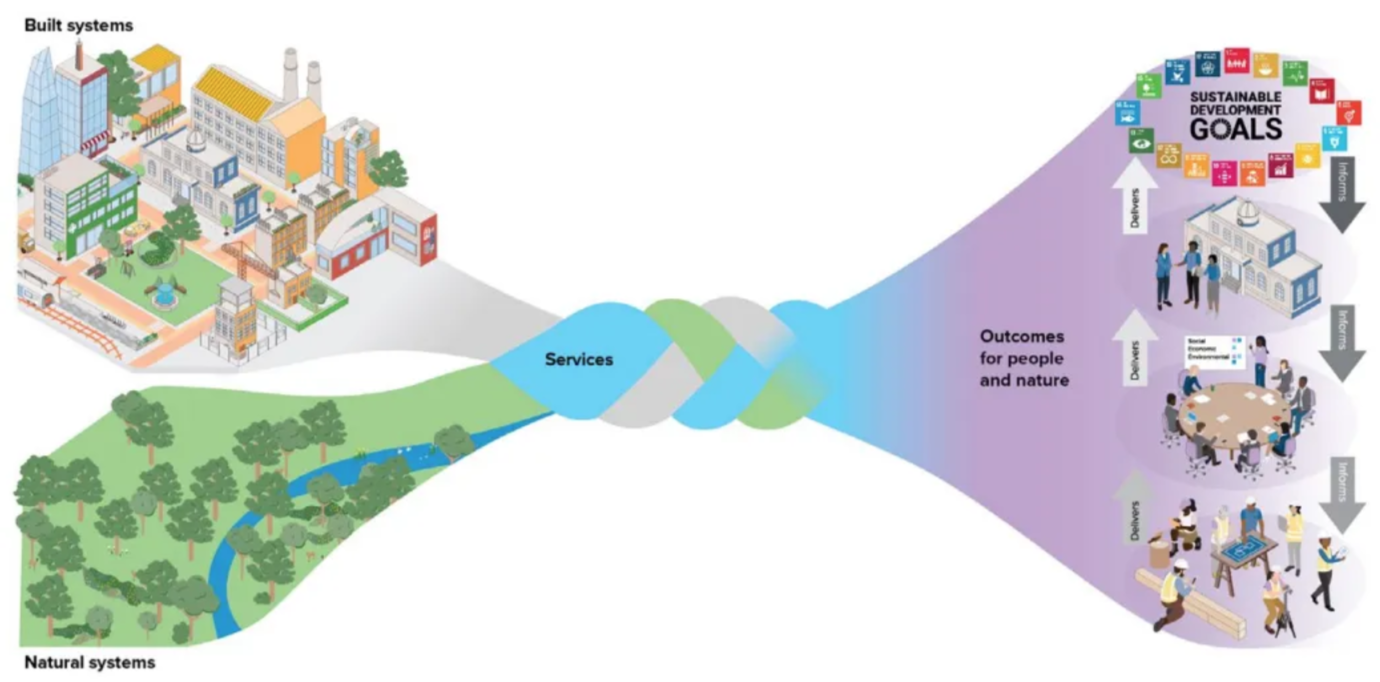
Transforming Infrastructure Performance: Roadmap to 2030
Carbon Data today to Avoid Climate Catastrophes tomorrow
Every decision made in regards to the built environment carries a carbon-related sacrifice. The built environment, with its substantial and often underestimated influence, contributes significantly to global emissions, both in direct and indirect ways.
 Sadly, we are less sensitised as a society to the enormous impacts of construction compared to the impact of plastic straws.
Sadly, we are less sensitised as a society to the enormous impacts of construction compared to the impact of plastic straws.
Nevertheless, sustainable alternatives exist, and data plays a critical role in monitoring advancements, shedding light on the industry’s carbon footprint, and reducing resource depletion.
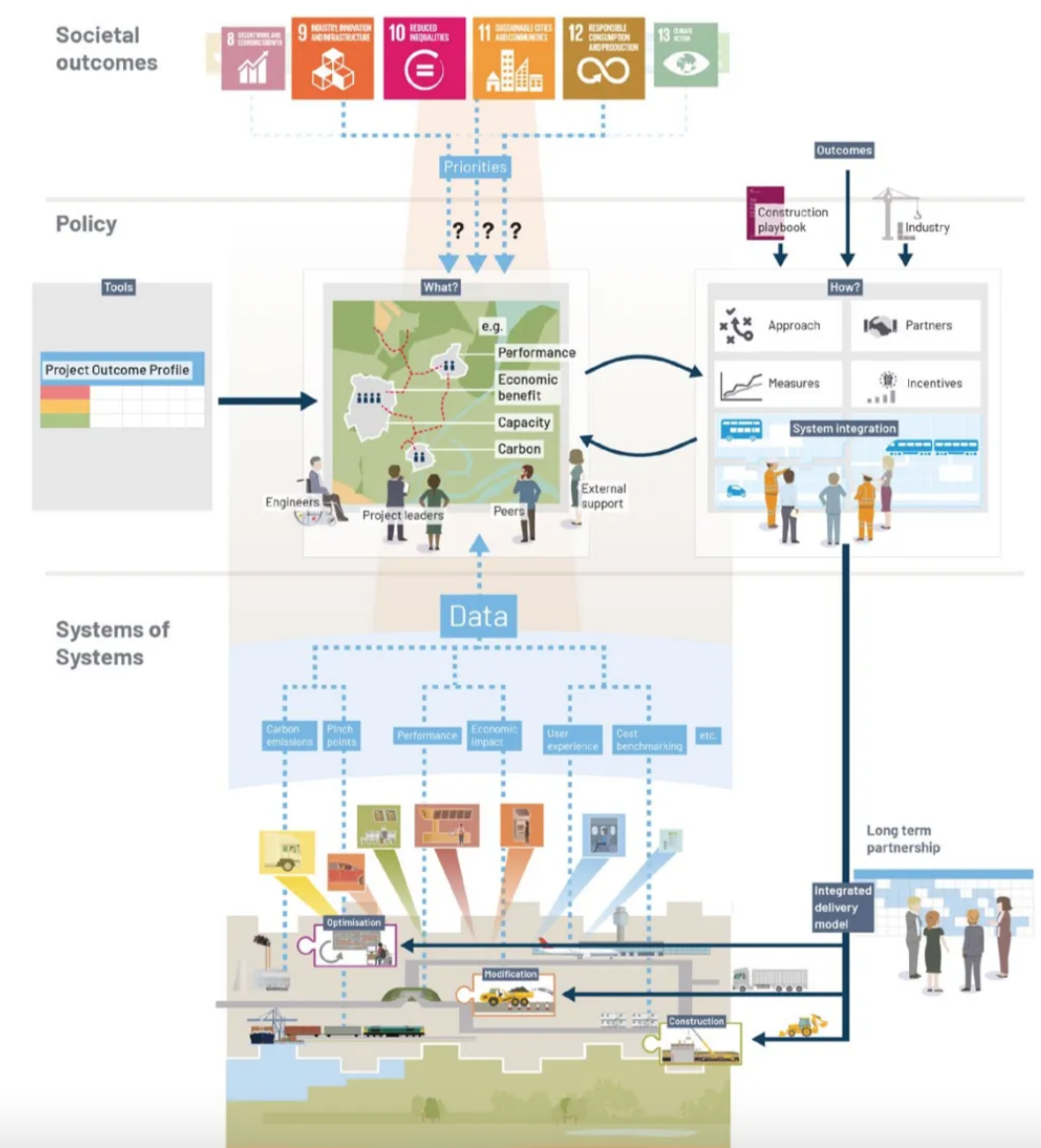
“There are opportunities to deliver interventions that impact less on the natural environment.” Roadmap 2030
Top down targets, bottom-up work
Climate targets and carbon budgets are set by clients, for projects, or sometimes even entire cities. However, that’s not how we build.
Construction happens by splitting tasks into many components, and delivering the pieces necessary to achieve the final outcome. Much like budget considerations don’t happen at the very end of the project, carbon and sustainability considerations should flow into every optimisation process happening.
What do we need for that? Data.
The devil is in the details
The construction of the built environment involves a vast array of data, encompassing structured text, documents, models, maps, imagery, and datasets of diverse sizes and significance.
To extract meaningful insights from this wealth of information, a comprehensive and meticulous approach is required. It’s important to acknowledge that there isn’t always a pre-existing solution readily available when it comes to deriving value from built environment data.
Work happening in the industry by the BECD, as well as other groups like our own (2050 Materials) contribute to the democratization of data in the industry.
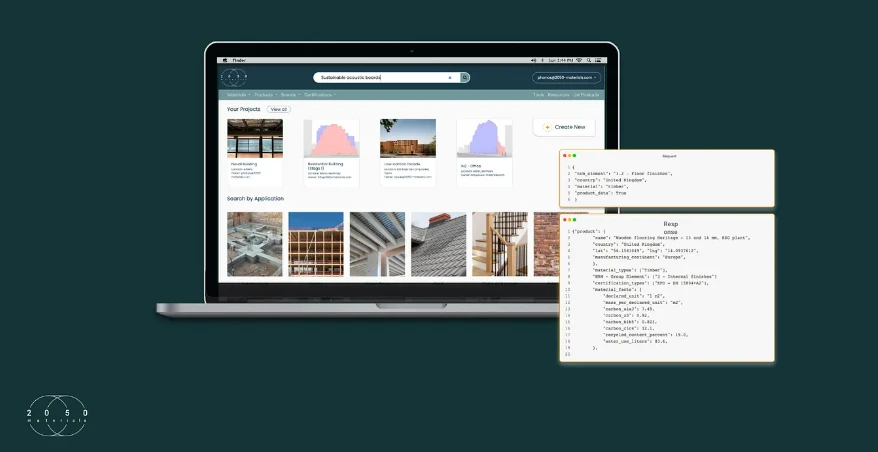
A free platform and an API product to power any process or tool (app.2050-materials.com)
Digital and Physical Come Together
In order to unlock its full potential, our digital sphere must complement and support the physical realm. The advantage of experimenting and rectifying errors within digital models outweighs the risks and costs associated with real-life consequences. However, the efficacy of our decisions relies heavily on the harmonious integration between these two domains.
How 2050 Materials contributes to solving these challenges
Although fragmented in their processes and often informal, we are convinced the construction sector is in desperate need of data related to carbon and water emissions.
2050 Materials was built alongside the leading architects and contractors globally, to help them take better decisions and build more sustainably.
Free Platform
2050’s platform hosts >30,000 products with EPDs and other sustainability certifications. It’s the easiest way to research, compare and find the right materials for your project, as well as run quick LCAs to understand the impact of your decisions.
API-first
But it doesn’t stop there.
If you already have a carbon process up and running, you don’t need to use (yet) another tool. The 2050 Materials database (and more) is available through an API which seamlessly integrates with other tools & processes, whether you’re an architect or a supply chain manager.
To find out more, reach out to us at api@2050-materials.com
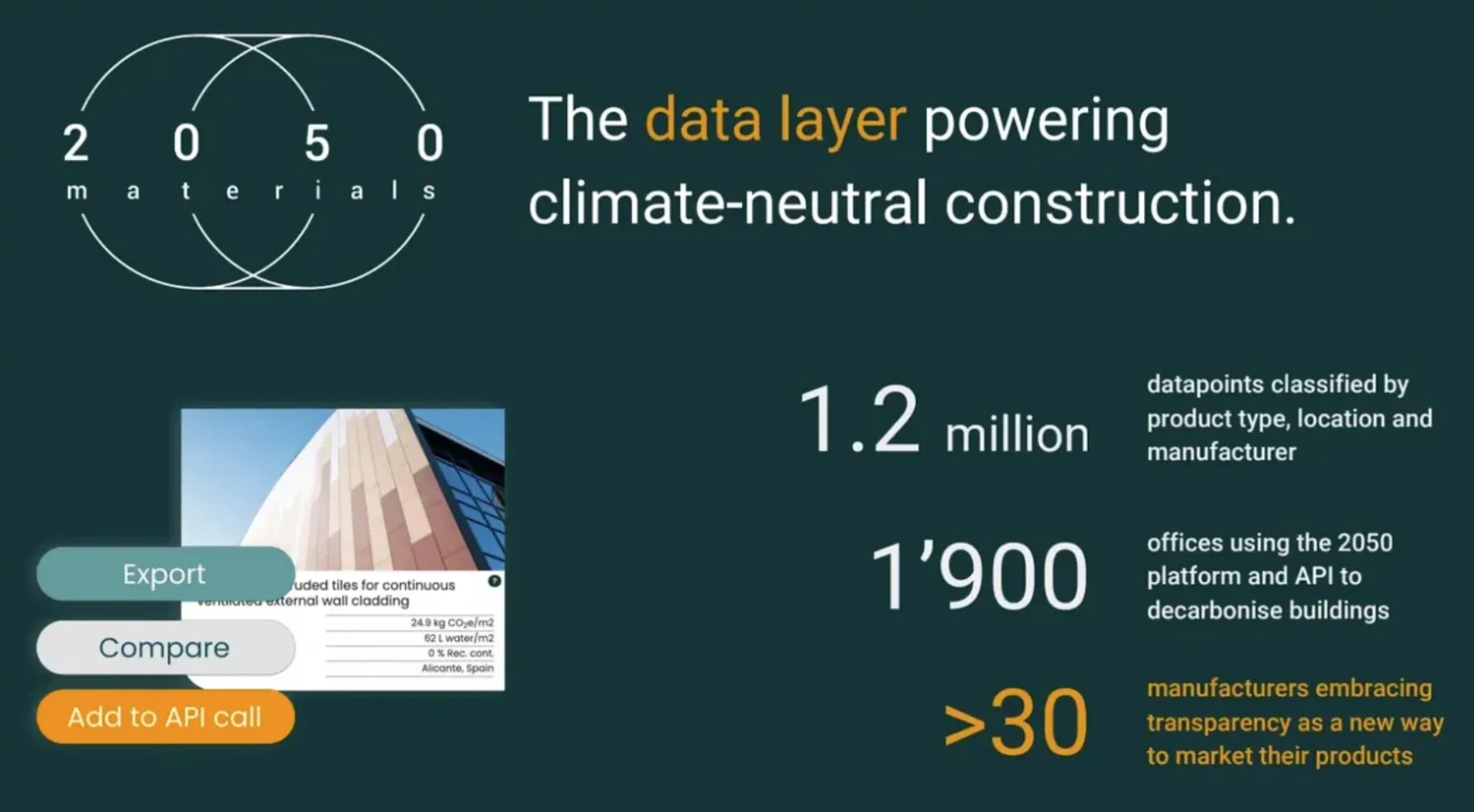
References:
Transforming Infrastructure Performance: Roadmap to 2030
Of bytes and bricks: data and the built environment
Data in the natural and built environment
If you would like to explore more articles around the topic then check out this interesting read.
Related articles

Climate-Resilient Materials for the Built Environment: A Data-Centred Prime
As climate volatility intensifies, resilience metrics are fast becoming as critical as carbon data in material selection. This article outlines why adaptation is now a design imperative, how materials can be evaluated through a systems lens, and what KPIs project teams should demand. From self-healing concrete to fire-rated façades, we present a structured taxonomy of resilient materials, explain how to embed this intelligence into digital design workflows, and propose next steps for specification, benchmarking, and procurement.
Read more
The Most Interesting Low Carbon Products in Office Design
In this article and collection, we highlight 11 outstanding products that contribute to a lower carbon footprint in office design.
Read more
Top Low Carbon Building Boards: Performance, Benefits, and Use Cases
The building boards highlighted in this article and collection showcase low-carbon innovation in modern construction.
Read more